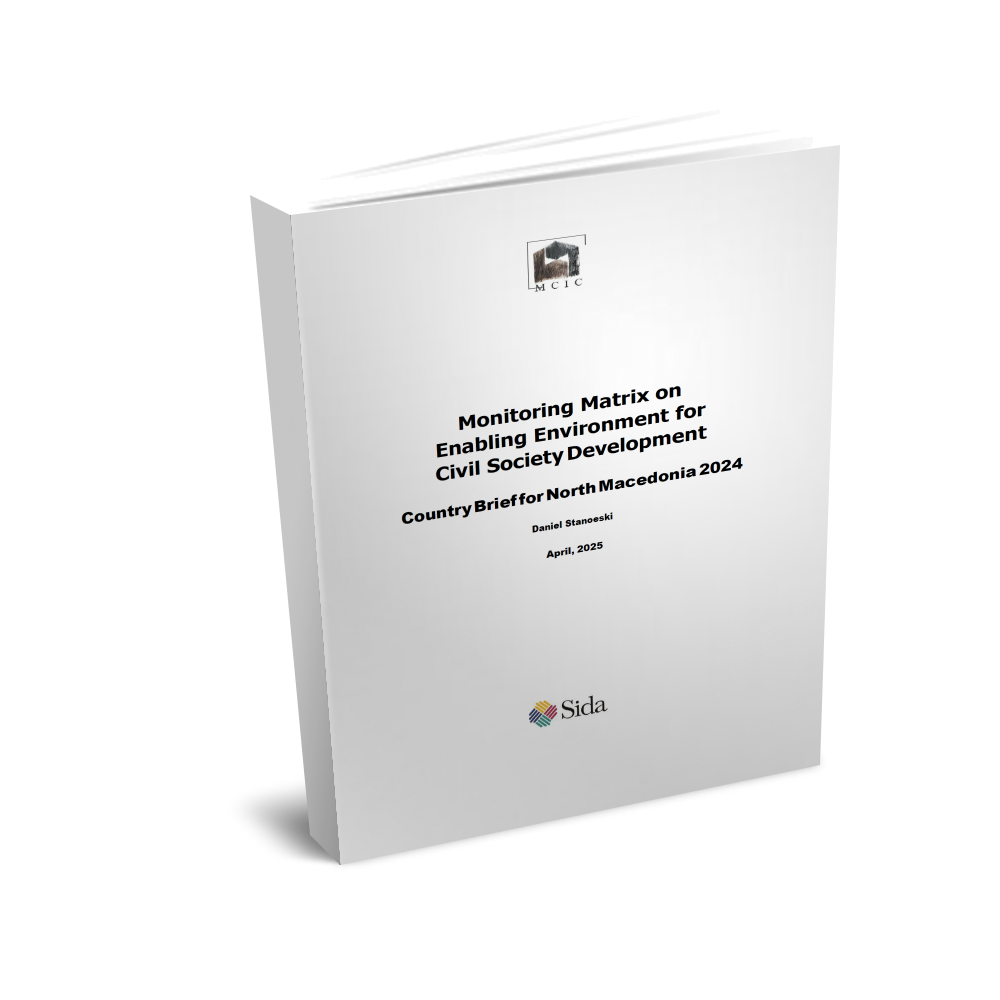| Monitoring Matrix on Enabling Environment for Civil Society Development Country Brief for North Macedonia 2024 |
 |
 |
 |
| Monday, 24 November 2025 12:54 | |||
|
Author: Daniel Stanoeski The Monitoring Matrix, developed in 2013 by BCSDN, with the support of its members and partners, sets the main principles and standards crucial for the legal environment to be considered supportive both for the operations and for development of CSOs. The Monitoring Matrix is organized around three main areas, each divided by sub-areas:
The areas are elaborated by standards, which are further specified through legal and practice indicators. The legal indicators are measured by coding the presence or absence of rules, costs, procedures, and obligations enshrined in legal regulation (primary and secondary) and policy frameworks enacted in the respective countries. To assure standardization and comparability of the data gathering process regarding the practice indicators, country researchers follow a methodology plan in which each of the 80 indicators are further operationalized in concrete mandatory and additional data types (i.e. operationalized dimensions of a practice indicator) to be reported across the countries. The principles, standards, and indicators rely on internationally guaranteed freedoms and rights and best regulatory practices at the EU level and in European countries. The Matrix aims to define the optimum situation for effective operation and development of civil society, as well as set a realistic framework that can be implemented by public authorities. Having in mind that the main challenges lay in implementation, the indicators have been defined to monitor the situation by taking into consideration both the legal framework and its practical use. The research undertaken aims to provide evidence on the enabling environment for civil society development and to influence the support of governments, the European Union and other donors towards more sustainable and strategic development of the sector. To analyse and interpret the data, country researchers use a unified data collection template which provides the indicators description and five category descriptions ranging from fully enabling to fully disabling environment provided under each indicator. The five category descriptions are specified for each legal and practice indicator in the Monitoring Matrix Toolkit, to enable researchers – based on the reported data – to choose one code (score) which most accurately summarizes the state of enabling environment concerning the respective indicator. In a first step, the researcher reports the required data types collected through different sources in the template box. In a second step, they choose one of five category descriptions specified for the respective indicator which best illustrates the reported data. The categories enable unified comparison of findings on the level of indicators across all country reports.
|
Google translate
Latest
- Коруптивниот притисок расте, а отпорот на граѓаните слабее
- Коруптивниот притисок расте, а отпорот на граѓаните слабее
- Извештај за процена на корупцијата во Северна Македонија 2025
- Доделени единаесет партнерски грантови на Цивика мобилитас
- Повик за избор на регионални експерти од граѓанското општество за Североисточен, Вардарски и Југоисточен плански регион
Popular
- Monitoring Matrix on Enabling Environment for Civil Society Development Country Brief for North Macedonia 2024
- Извештај за процена на корупцијата во Северна Македонија 2025
- На спортот во Северна Македонија му се потребни повеќе жени
- Граѓански импулс #10: месечен осврт на активностите на грантистите
- Препораки за родова еднаквост и инклузија во македонскиот спорт









